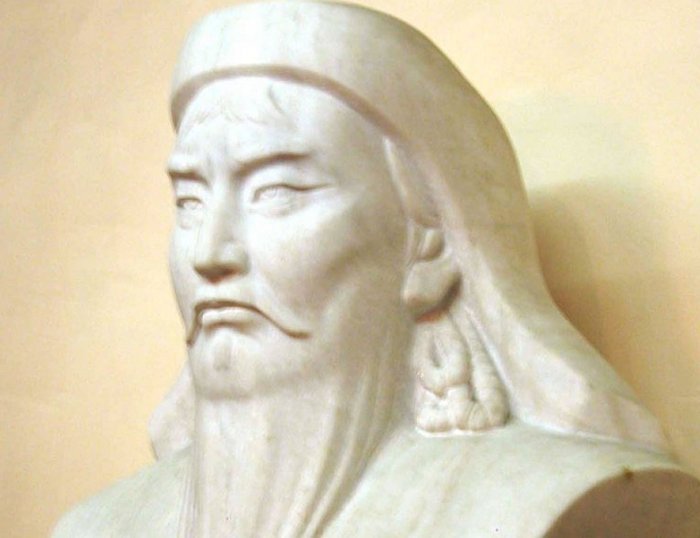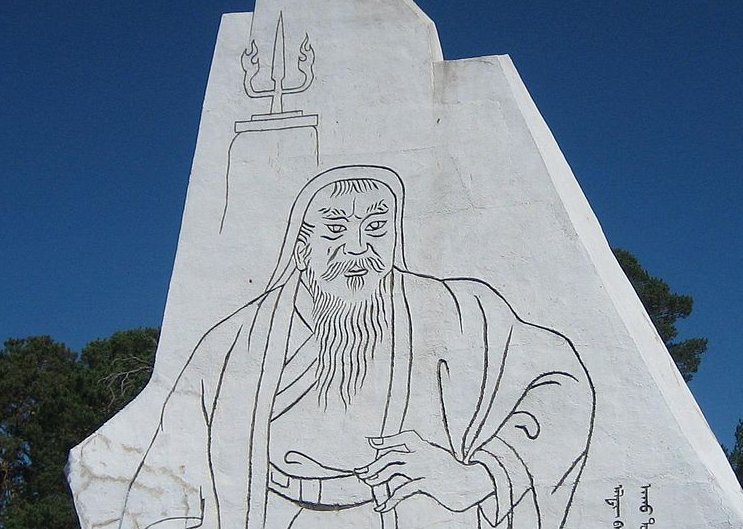Genghis Khan – Conqueror Of Nations, Ruler Of People
David Tee - AncientPages.com - Genghis Khan is a title, not a name. Genghis Khan was born with the name "Temujin." The name means "blacksmith" or "one who forges.
The Mongols use the word Khan to denote position or authority. So when we read his name, Genghis Khan, we are saying Genghis, the ruler, or Genghis, the ruler.
A bust of Genghis Khan adorns a wall in the presidential palace in Ulaanbaatar, Mongolia. Image credit: Jim Garamone, American Forces Press Service - http://www.defense.gov/ via wikipedia
The title Khan is also used in India and other Asian countries with the exact definition. Whether this was an independent use or influenced by the Mongol ruler and his heirs is unknown.
Genghis's Start
Historians have discovered quite a bit about Genghis Khan (1162 - 1227). His father, Yesukai, ruled over 40,000 Mongol families. His mother, Hoelun, was taken prisoner by his father's people and forced to marry his father.
Genghis displayed such leadership qualities that even his older brothers and other clan leaders called Temujin their leader. It was before he assumed his father's place upon the latter's death.
When Temujin reached 9, his parents arranged a marriage with the 10-year-old daughter of Dai Sechen, the leader of another tribe. But little else is known about Genghis' early years apart from this information.
Genghis Khan’ s Rise To Power
Since the Mongol people had no natural written language before Genghis Khan turned the people into rulers of a large empire, it is hard to determine his exact rise to power. Legends say that before he got powerful, Genghis was a captive of the Jin Dynasty, and the Merkit captured his wife.
Memorial monument of Djingis Khan outside Dadal which is a possible birthplace. Image credit: I, Chinneeb/Wikipedia
Another legend states that he eventually grew up and served Ong Khan. He was such a faithful servant that Ong Khan made Genghis his heir even though he was not his son. It led to conflict with the Kan's natural son, whom Genghis had to defeat to gain supreme rule over all the Mongols.
Once this conflict was over, Genghis took the title Universal Ruler, which is what the name and title Genghis Khan mean.
Genghis Khan And The Law
After he was recognized as the Supreme Ruler of the Mongols and the world, Genghis Khan worked on revising the law. Some of his changes may have been influenced by his mother's situation and his own.
One of his first acts was to ban or make illegal the kidnapping of women. He also declared that selling women for marriage was illegal. Then, he stated that all children were legitimate in the eyes of the empire, no matter who their parents were.
Other accomplishments included the regulating of hunting. This act made more meat available to all people. He also made the stealing of animals a capital offense. Even taking lost property was considered to be theft in his eyes.
Genghis Khan began record keeping and had the Mongol language put down on paper. He also created official seals and an official who oversaw all judicial decisions, plus he had the power to give the death sentence if needed.
Genghis Khan's Military Conquest
Part of having the favor of the people and the gods, Genghis Kahn had to continue to prove himself militarily. Most of his conquests remained in the north of India, Kashmir, and the Caspian Sea.
Genghis could conquer much of China, but south of Beijing was out of his reach. His conquests also included some of now Siberia and all of the Korean peninsula. These conquests cemented his role as the Supreme leader of the Mongols, and the people saw that he had the favor of the gods, so they remained loyal to him.
Genghis Khan's Death
He was in a battle against the Tangut people when life and death caught up with him. Genghis Khan seems to have died (1227 AD) not of a fatal blow from an enemy or a traitor but of natural causes.
His tomb is not extravagant by any means, yet its location has been unknown since the end of the Mongol Empire. Some believe it is hidden in the Khentii Mountains and protected because it is cursed. On his death, his son Ogedai replaced him as ruler and reigned until AD 1241.
Written by – David Tee - AncientPages.com Staff Writer
Updated on January 22, 2023
Copyright © AncientPages.com All rights reserved. This material may not be published, broadcast, rewritten or redistributed in whole or part without the express written permission of AncientPages.com
Expand for referencesMore From Ancient Pages
-
 Unraveling The Mystery Of Ancient ‘False Doorways’
Ancient Mysteries | May 24, 2014
Unraveling The Mystery Of Ancient ‘False Doorways’
Ancient Mysteries | May 24, 2014 -
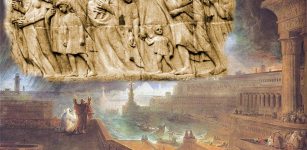 Is Ipuwer Papyrus A Report Of An Ancient Catastrophe?
Artifacts | Aug 7, 2017
Is Ipuwer Papyrus A Report Of An Ancient Catastrophe?
Artifacts | Aug 7, 2017 -
 Huge Round Ancient Sewer System Covering 160,000 Square Meters Discovered In Ancient City Of Mastaura
Archaeology | Apr 25, 2022
Huge Round Ancient Sewer System Covering 160,000 Square Meters Discovered In Ancient City Of Mastaura
Archaeology | Apr 25, 2022 -
 Polycarp Of Smyrna: Burned At The Stake And Pierced With A Dagger
Featured Stories | Jun 25, 2020
Polycarp Of Smyrna: Burned At The Stake And Pierced With A Dagger
Featured Stories | Jun 25, 2020 -
 Jesus Christ’s Tomb Dates To Roman Emperor Constantine’s Era – Researchers Confirm
Archaeology | Dec 12, 2017
Jesus Christ’s Tomb Dates To Roman Emperor Constantine’s Era – Researchers Confirm
Archaeology | Dec 12, 2017 -
 Why Did Ancient Humans Have Same Sense Of Smell, But Different Sensitivities?
Archaeology | Jan 6, 2023
Why Did Ancient Humans Have Same Sense Of Smell, But Different Sensitivities?
Archaeology | Jan 6, 2023 -
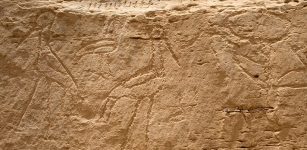 Unknown Rock Inscriptions And Earliest Monumental Hieroglyphs In Egypt Shed New Light On Ancient Writing
Archaeology | Jun 27, 2017
Unknown Rock Inscriptions And Earliest Monumental Hieroglyphs In Egypt Shed New Light On Ancient Writing
Archaeology | Jun 27, 2017 -
 Famous Viking Ragnar Lodbrok – Legendary Fearless Sea-King Of The North
Featured Stories | Apr 24, 2016
Famous Viking Ragnar Lodbrok – Legendary Fearless Sea-King Of The North
Featured Stories | Apr 24, 2016 -
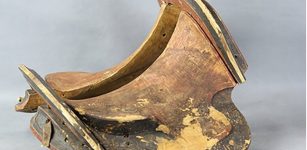 World’s Oldest Known ‘True’ Saddle Discovered In East Asia
Archaeology | Dec 11, 2023
World’s Oldest Known ‘True’ Saddle Discovered In East Asia
Archaeology | Dec 11, 2023 -
 Mysterious Tunnel Found Under Saxon Palace Ruins In Warsaw, Poland
Archaeology | Sep 14, 2023
Mysterious Tunnel Found Under Saxon Palace Ruins In Warsaw, Poland
Archaeology | Sep 14, 2023 -
 Calçoene – Amazon Stonehenge And The Mysterious Amapán Megalithic Culture
Civilizations | Feb 14, 2018
Calçoene – Amazon Stonehenge And The Mysterious Amapán Megalithic Culture
Civilizations | Feb 14, 2018 -
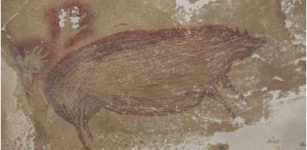 World’s Oldest Known Cave Painting – 45,000-Year-Old Depiction Of Wild Pig Discovered At Leang Tedongnge Cave
Archaeology | Jan 14, 2021
World’s Oldest Known Cave Painting – 45,000-Year-Old Depiction Of Wild Pig Discovered At Leang Tedongnge Cave
Archaeology | Jan 14, 2021 -
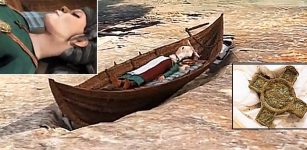 Extraordinary Viking Boat Burial Of Two People Unearthed In Central Norway
Archaeology | Nov 20, 2019
Extraordinary Viking Boat Burial Of Two People Unearthed In Central Norway
Archaeology | Nov 20, 2019 -
 207-Year-Old Whaling Shipwreck Discovered In Gulf Of Mexico
Archaeology | Mar 23, 2022
207-Year-Old Whaling Shipwreck Discovered In Gulf Of Mexico
Archaeology | Mar 23, 2022 -
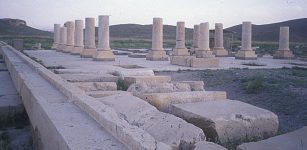 Pasargadae: Capital Of Achaemenid Empire Destroyed By Alexander The Great
Civilizations | Oct 24, 2016
Pasargadae: Capital Of Achaemenid Empire Destroyed By Alexander The Great
Civilizations | Oct 24, 2016 -
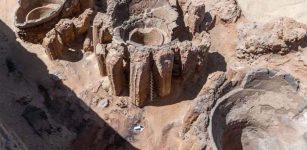 World’s Oldest Beer Factory Discovered In Abydos, Egypt
Archaeology | Feb 16, 2021
World’s Oldest Beer Factory Discovered In Abydos, Egypt
Archaeology | Feb 16, 2021 -
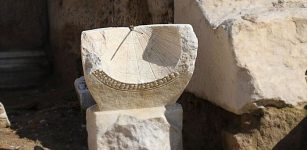 2,000-Year-Old Sundial Discovered In Ancient City Of Laodicea, Turkey
Archaeology | Mar 25, 2020
2,000-Year-Old Sundial Discovered In Ancient City Of Laodicea, Turkey
Archaeology | Mar 25, 2020 -
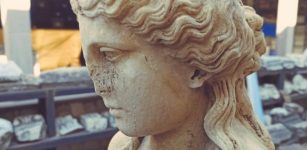 1,800-Year-Old Statue Of A Water Nymph Found Underground In The Ancient City Of Amastris
Archaeology | Sep 8, 2023
1,800-Year-Old Statue Of A Water Nymph Found Underground In The Ancient City Of Amastris
Archaeology | Sep 8, 2023 -
 Stunning Images Of Shackleton’s Lost Ship Endurance Discovered Off The Coast Of Antarctica
Archaeology | Mar 9, 2022
Stunning Images Of Shackleton’s Lost Ship Endurance Discovered Off The Coast Of Antarctica
Archaeology | Mar 9, 2022 -
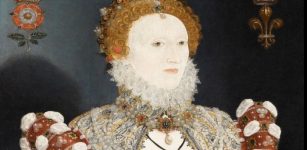 Queen Elizabeth I Was Identified As Author Of Tacitus’s Annales Translation
News | Dec 1, 2019
Queen Elizabeth I Was Identified As Author Of Tacitus’s Annales Translation
News | Dec 1, 2019

